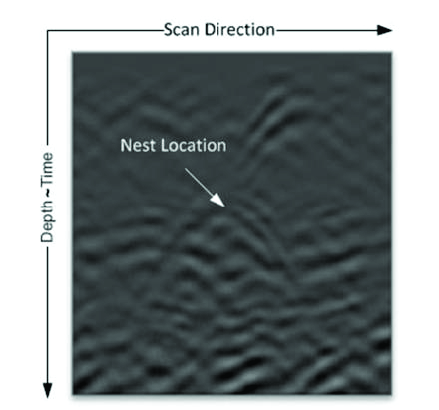Abstract

We use a Ground Penetrating Radar (GPR) to localize eggs of sea turtles laid in sand. GPR technology has been developed to detect subsurface structures, and successfully applied in archeology, civil engineering, and demining. Typical uses rely on relatively strong signals due to high contrast in dielectric properties of the buried manmade objects and the soil. Signal to noise ratios in our task are substantially lower, as the variances in humidity and granularity of layers of salty sand, and the presence of nuisance artifacts such as rocks, clogs of seashells, air pockets, etc., contribute to making turtle nest detection a challenging task. We present a combination of signal processing, pattern recognition, and feature selection techniques that stand up to these challenges. Our approach is evaluated using ground truth data collected in the field. We believe that this method can be useful in a range of non-standard GPR applications, especially when the signals to noise ratios are low.
Copyright Notice
The documents contained in these directories are included by the contributing authors as a means to ensure timely dissemination of scholarly and technical work on a non-commercial basis. Copyright and all rights therein are maintained by the authors or by other copyright holders, notwithstanding that they have offered their works here electronically. It is understood that all persons copying this information will adhere to the terms and constraints invoked by each author’s copyright. These works may not be reposted without the explicit permission of the copyright holder.